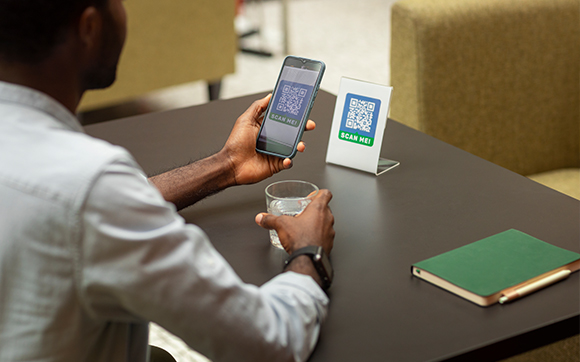The UAE is at the forefront of digital transformation, and contactless payments have become a critical part of the region’s payment ecosystem. QR payment solutions are revolutionizing how businesses and consumers interact, driving the shift toward a cashless society. As businesses across the UAE integrate QR code payments into their operations, merchants and customers are reaping the benefits of fast, secure, and seamless transactions.
The Rise of QR Payment Solutions
QR codes have emerged as a convenient alternative to traditional payment methods like cash and card swipes. With smartphone penetration reaching 99% in the UAE in 2023, QR payments are more accessible than ever. The Central Bank of the UAE reported a 23% year-on-year increase in contactless payments, fueled by the growing adoption of QR code technology.
One of the primary reasons for QR payment solutions’ popularity is their simplicity. All consumers need to do is scan a code using their mobile phones and approve the payment. This eliminates the need for physical contact with payment terminals, making QR codes ideal for a post-pandemic world that prioritizes hygiene and safety.
Growth in Contactless Payments
According to Mastercard’s New Payments Index, the UAE is already a leader in contactless payments, with 78% of point-of-sale transactions in 2022 being contactless. QR payments play a significant role in this shift, allowing merchants to offer a more modern, digital payment experience without needing expensive hardware. This has significantly benefited small and medium-sized businesses, which can implement QR payments at a low cost and serve a wider range of customers.
Furthermore, initiatives like the UAE government’s “Smart Dubai” strategy, which aims to digitize the economy, are accelerating the adoption of contactless solutions like QR payments. The integration of QR codes with popular digital wallets such as Apple Pay and Google Pay and local solutions like Etisalat Wallet is making these payment methods even more convenient for consumers.
Future of QR Payments in UAE
The future of QR payments in the UAE looks promising. According to a recent report by PwC, digital payments in the UAE are expected to grow by 17% annually through 2027, with QR payments projected to become a dominant force in the market. By 2025, over 80% of retail outlets in the UAE are expected to offer QR code payments as part of their payment options.
Another development to watch is the Central Bank’s launch of the UAE’s Instant Payment Platform (IPP), which allows for real-time payment settlements across all banks and digital wallets. This platform is expected to increase the speed and reliability of QR payments, making them more attractive to both consumers and businesses.
Advantages for Merchants
For merchants, adopting QR payment solutions is an opportunity to meet evolving consumer preferences. QR payments reduce the friction associated with traditional payments, enabling businesses to provide a smoother, faster, and more secure checkout experience. Additionally, with the growing shift toward mobile and e-commerce, QR codes allow merchants to easily accept online and in-store payments.
By 2027, QR codes are expected to become a standard payment method for both in-person and online transactions. The World Bank forecasts that digital wallets, often paired with QR codes, will account for 55% of all e-commerce payments in the UAE.
Conclusion
QR payment solutions are shaping the future of contactless payments in the UAE. As more businesses and consumers embrace this technology, it will continue to drive the UAE’s transition to a cashless, digital-first economy. The growing adoption of QR payments offers merchants a way to meet customer demands while benefiting from cost-effective, secure, and flexible payment options.



